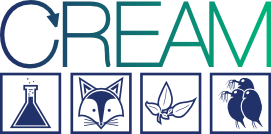Unique community and ecosystem level validation field data sets will be collected using microcosms and mesocosms. For invertebrates outdoor mesocosms will be used using the unique facilities of Wageningen University, The Netherlands. The facilities in Wageningen consist of experimental ditches of 60 m by 3.5 m which can be interlinked, if needed. They constitute an ideal experimental tool to study the influence of migration, lifecycle characteristics and density dependence of populations and of the structure of the aquatic ecosystem and spatial structure of the water ways on the response of aquatic lentic invertebrates to chemical stress. The pond mesocosms available at the gaiac in Aachen, Germany will be used to gather planktonic validation data sets. Soil validation sets for springtails like F. candida and other soil invertebrates will be collected using terrestrial mesocosms and lab facilities at RUC. In order to parameterise the uptake of chemicals by bats, the University of York will perform experiments studying the bioaccessibility of the study contaminants from insects into predatory species, mimicking the chemistry of the bat gut. EAWAG and IME will perform toxicity tests with fish cells to study the TK/TD of chemicals in fish and how sublethal effects propagate to the population level. UFZ and RWTH will compile Daphnia data sets.
This workpackage will be coordinated by WU.

